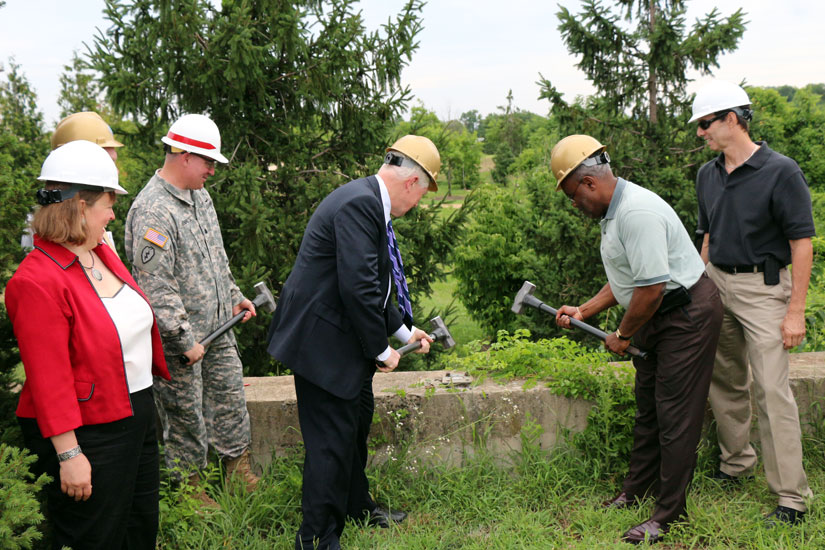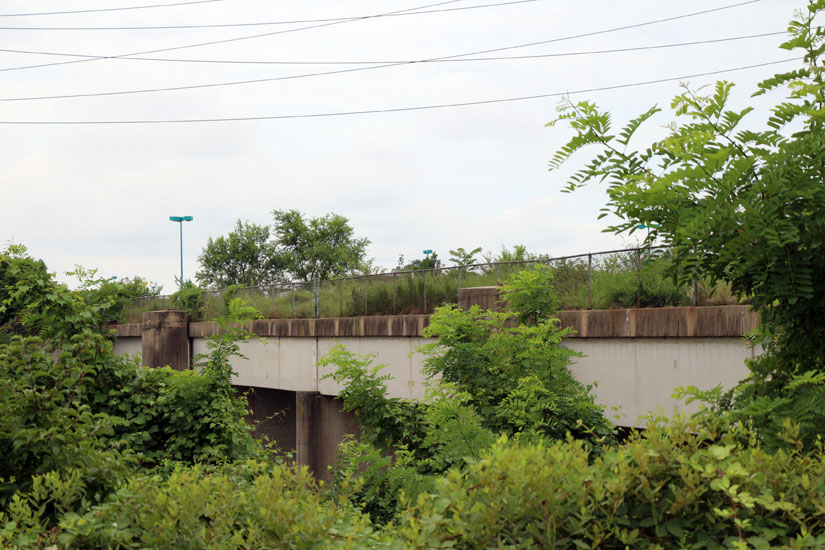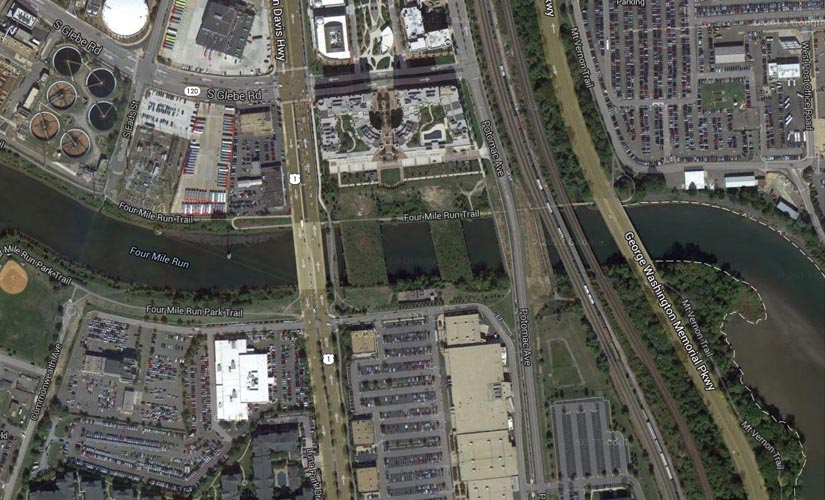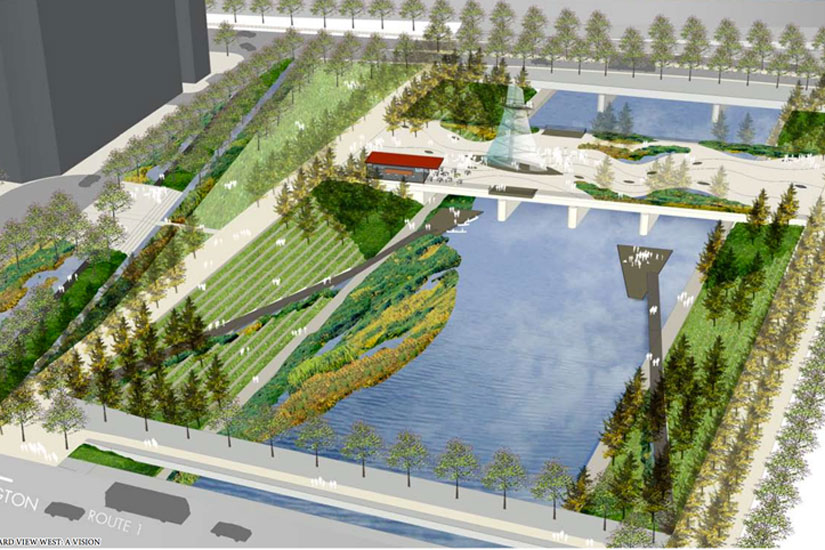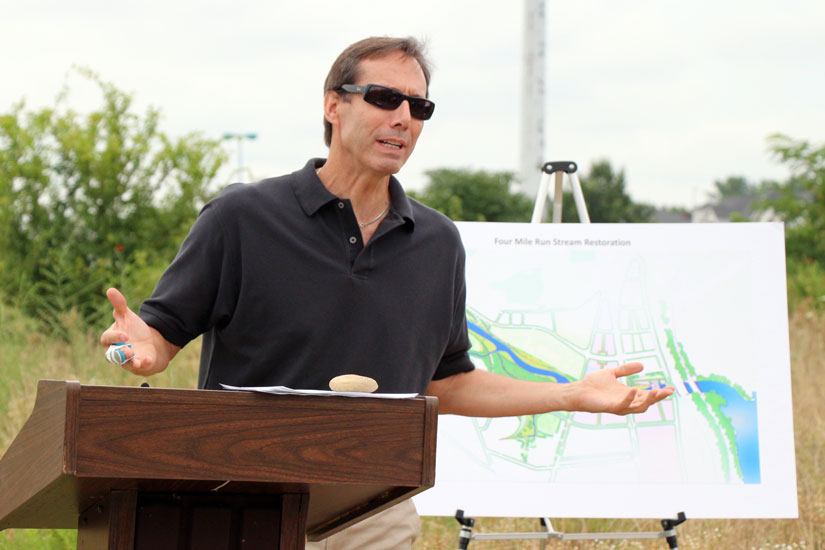A ceremonial swinging of sledgehammers kicked off the demolition of an old bridge over Four Mile Run this morning.
The bridge, located between Potomac Avenue and Route 1 near Potomac Yard, was used by trains until the late 1980s when the railroad was decommissioned. It has since sat out of use, overgrown with vegetation.
Rep. Jim Moran (D-Va.), County Board Vice Chair Jay Fisette and Alexandria Mayor William Euille were at the bridge Monday morning, sledgehammers in hand, to announce the start of demolition, which will get fully underway in two weeks. The demolition is expected to be completed by April.
The bridge is being taken down to create open space above Four Mile Run, which environmental officials from both jurisdictions say will allow the stream to grow vegetation and develop a healthier ecology. Moran recalled a large flood in the 1970s, after which the local governments decided to pour in concrete. The concrete mitigated flood impacts but wound up damaging the stream’s ecosystem, Moran said.
“The vegetation serves its purpose if you allow it to grow,” Moran said, “and this does.”
The Pulte Group, which owns the Potomac Yards development adjacent to Four Mile Run, will fund the $3.5 million demolition and the stabilization of the stream banks. After the demolition, Alexandria and Arlington will jointly fund a new, urban-style park on another unused bridge, adjacent to Potomac Avenue.
The plan to transform the area started in 2006 when both jurisdictions passed the Four Mile Run Restoration Master Plan, and has been helmed by the Arlington/Alexandria Four Mile Run Redesign Task Force.
“We finally are seeing these plans come to fruition,” Moran said. “We’ve been waiting 25 years for a ribbon cutting here, and now we’ve got a sledgehammer smashing.”
The government officials in attendance and executives from the Pulte Group took up the hammers at a corner of the bridge that still had some cement exposed. Most only lightly tapped the bridge a couple of times, but Moran whacked away harder and harder until he broke off a piece of the concrete, then broke into a huge grin.
Moran was not alone in his good mood, as the culmination of a half-dozen years of planning had Euille cracking jokes.
“Just because the bridge is gone doesn’t mean Arlington and Alexandria residents can’t go to and fro,” he said. “Now everyone just needs to learn how to swim.”
While the thought of taking down a bridge would cause many to think a future with fewer connections between the city and the county is coming, Fisette and others argued an aesthetically and environmentally enhanced Four Mile Run would bring the jurisdictions closer together.
“This stream will become a connection, not a divider,” Fisette said. “The demolition of this bridge is not going backward, it’s going forward.”
A number of active, existing bridges over Four Mile Run will remain after the demolition, including bridges carrying traffic on the GW Parkway, Potomac Avenue, Route 1, freight and passenger heavy rail, Metro, and a bike trail.
Rendering via the Northern Virginia Regional Commission


